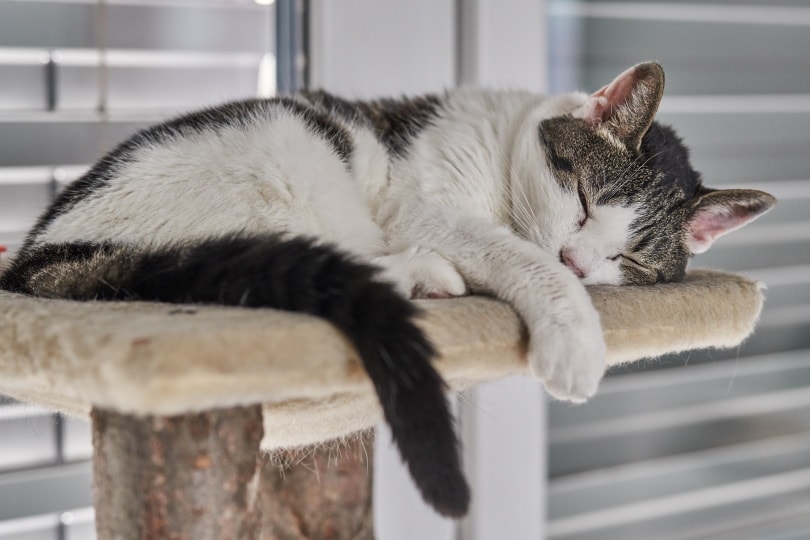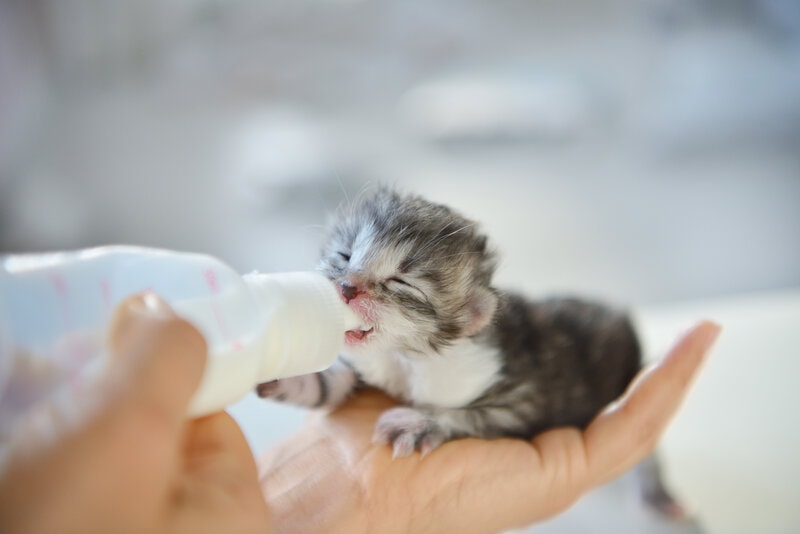How to Tell if a Cat Still Has Kittens Inside? 11 Vet-Reviewed Signs
Updated on
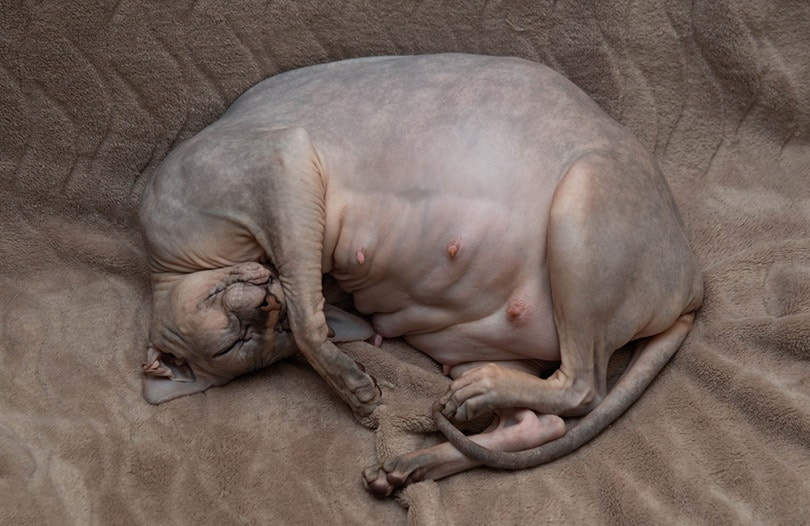
If your cat is pregnant, there is no doubt that you will be excited to welcome the new litter of kittens into the world. As exciting as this time may be, it can also be a bit overwhelming. Most cats do great with unassisted, natural births, but it is normal for you as an owner to wonder whether the process is going smoothly.
Below, we will go over some telltale signs that help you identify whether your female cat still has kittens inside that need delivered. Of course, it is important to note that you should always be under the supervision of a veterinarian during this process and have them on standby in case anything was to cause you concern.
The 11 Signs That There Are More Kittens on the Way
1. Panting
Heavy breathing is a telltale sign of labor. Not only does giving birth require a lot of energy, but it is also very uncomfortable. If you notice heavy breathing and panting after the delivery of a kitten, it’s a good sign there are more on the way. Your cat will likely settle and calm down once delivery is complete.
If you notice extended periods of restlessness without any other signs of labor and delivery, getting ahold of the veterinarian is ideal to rule out any other potential issues.
2. Vocalization
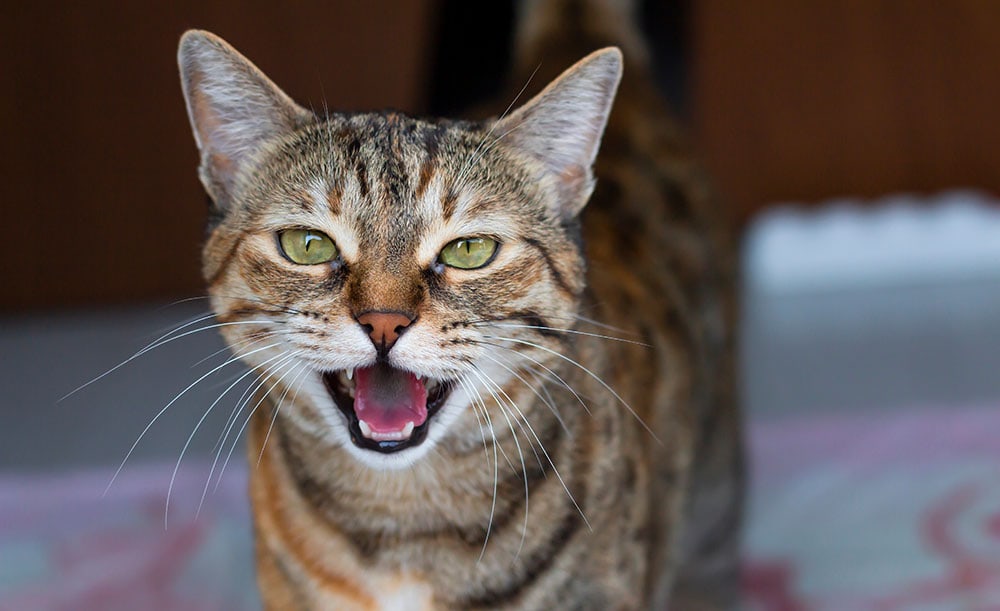
Labor is painful, so do not be alarmed by vocalizations that are made during the process. Your cat can make a wide variety of vocalizations during the process. If you end up noticing she is vocalizing in pain for an extended period with no signs of delivery, this could be a sign of distress and the veterinarian will need to be contacted so that they can further assist you.
3. Straining
Your cat will bear down and strain in the second and third stages of labor. It may even look like she’s trying to use the bathroom. Delivering little ones is hard work and the uterine contractions involved are no joke.
The straining helps push the kittens through the birth canal. In between births, your cat will likely clean and tend to her kittens and then begin straining again when the next kitten is ready for birth. If straining lasts for over 25 minutes, it is a good idea to contact the veterinarian for further guidance.
4. Licking of Genitalia
Licking the genital area helps to dissolve the thin membrane surrounding the kitten. The fluid-filled sac allows the kitten to pass through the birth canal for delivery. As she feels the kittens shifting within her body, she’ll lick the area repeatedly to help the process along.
5. Aggression
During and after the birthing process, your cat must focus on the protection of herself and her newborn kittens. She may exhibit signs of aggression or may simply seem more protective than usual. This is completely natural behavior, and if she is normally very comfortable with you, this will likely return once the delivery is complete and she becomes more comfortable and settled.
Keep in mind that her hormones are all over the place during and after pregnancy. Do not be alarmed if the behavior lasts longer than initially expected.
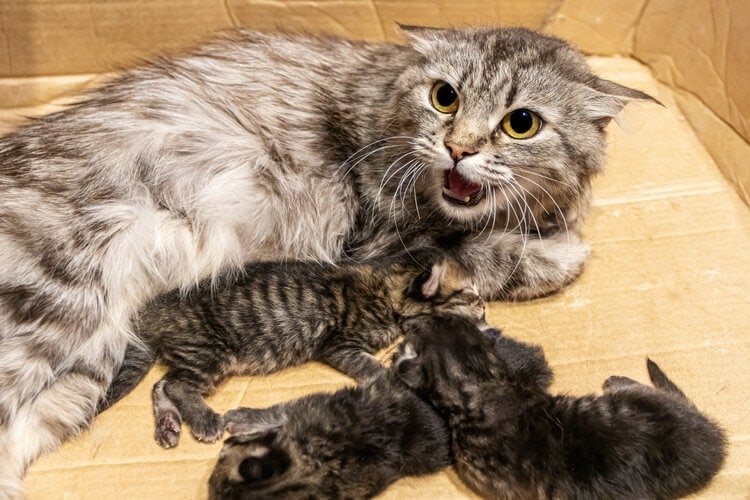
6. Placenta or Afterbirth Did Not Pass After Last Kitten
The placenta or afterbirth will pass after each kitten is delivered. While it can take up to 15 minutes for the placenta to pass, there is a possibility there may be more kittens needing to be delivered as well.
Keeping track of membranes after delivery can be difficult, as the mother will also eat them after they pass. If you have any concerns regarding this, contact your veterinarian for advice.
7. Fluid-Filled Bubble in Birth Canal
If you notice a fluid-filled bubble in the birth canal, that is a kitten. If the kitten is not delivered with 10 minutes of or emerging from the birth canal, there is a chance it may be stuck. If this does happen, it is best to contact your veterinarian for further guidance before doing anything on your own to help assist the birth. You do not want to cause her any pain, discomfort, or potentially harm her or the unborn kitten.
8. Lack of Focus on Newborn Kittens
During active labor, your female cat will tend to the newborn briefly but will also have to focus on the delivery of the rest of the litter. She will not be able to bond and nurture the kittens until delivery is complete.
If you notice that your cat withdrawing from her kittens completely and is not showing any interest in them, you need to let the veterinarian know. This does not necessarily mean there is a stuck kitten inside, but it can be a sign as well.
Make sure not to overwhelm her after she gives birth. She will need a quiet, comfortable space to tend to her new kittens.
9. Discharge
When your cat is in active labor it is normal to notice some discharge, even blood-tinged discharge, to pass through the birth canal. If the cat begins bleeding excessively during labor, this warrants a call to the tee vet. Also, if she is experiencing bloody discharge for more than a week after delivery, get in contact with the veterinarian immediately so that she can be checked out and the cause can be determined.
10. Lack of Appetite
When your cat is in the process of giving birth, chances are food will not be her priority during this process. A lack of appetite is common during delivery.
Your female cat will not likely be focused on food immediately after giving birth, but within a few hours, her appetite should return. After all, she needs to eat to replenish her energy and get the needed nutrients to nurse her newborn kittens.
11. Fewer Kitten Delivered Than Shown on Imaging
If you had the veterinarian perform a prior X-ray or ultrasound during your cat’s pregnancy and you got a headcount on the number of kittens to expect, there is a cause for concern if your cat does not deliver the number of kittens that were shown on imaging.
Contact your veterinarian for further advice if fewer kittens were delivered. You will likely need to get into the office for repeat imaging to see if any kittens were left in the uterus. If there are, an emergency C-section may be necessary.
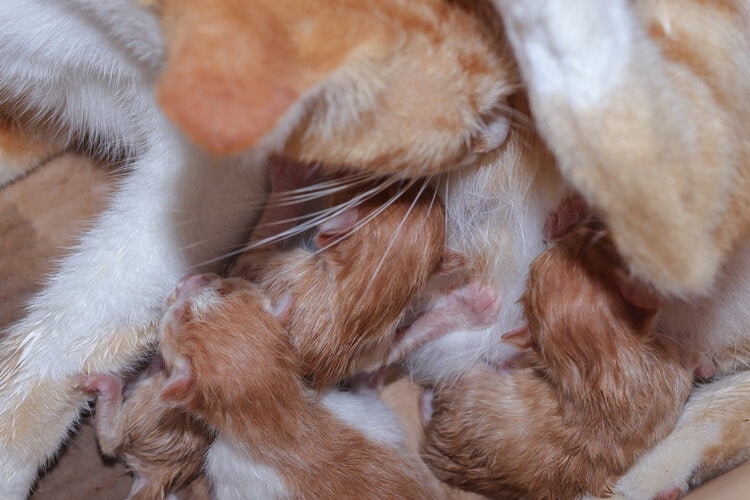
Gestation Period of a Cat
The average gestation period for a cat is 63 to 65 days. Unless you are a breeder, it can be difficult to tell when your cat could have fallen pregnant. A lot of owners do not notice their cat’s pregnancy until the later stages when their abdomen grows noticeably large. It’s important to be aware of the different stages of labor and the signs and symptoms that come along with it.
Signs of Impending Labor
- Nesting
- Restless or Nervousness
- Increased Affection
- Lowered Body Temperature
- Vocalization
- Panting/Rapid Breathing
- Loss of Appetite
- Increased Licking
The 3 Stages of Cat Labor
1. Stage 1
Uterine contractions will begin during the first stage of labor. The contractions will gradually increase and become more frequent as delivery gets closer. A common sign that contractions have begun is when your cat spends more time in the nest and starts pacing and scratching around.
If it is the female’s first litter, this first stage can last up to 36 hours. It is important to note that she may seek reassurance during this stage, as she is uncomfortable and maybe frightened at this new experience.
2. Stage 2
Contractions will become stronger and more frequent during the second stage of labor. As the kitten begins to make its way down into the birth canal, your cat may start straining and bearing down to help the process along. It may appear like she’s trying to go to the bathroom.
At this stage, the outer layer of the membrane surrounding the kitten will rupture but the inner membranes will remain as the delivery occurs. Delivery of a single kitten can take anywhere from 5 to 30 minutes.
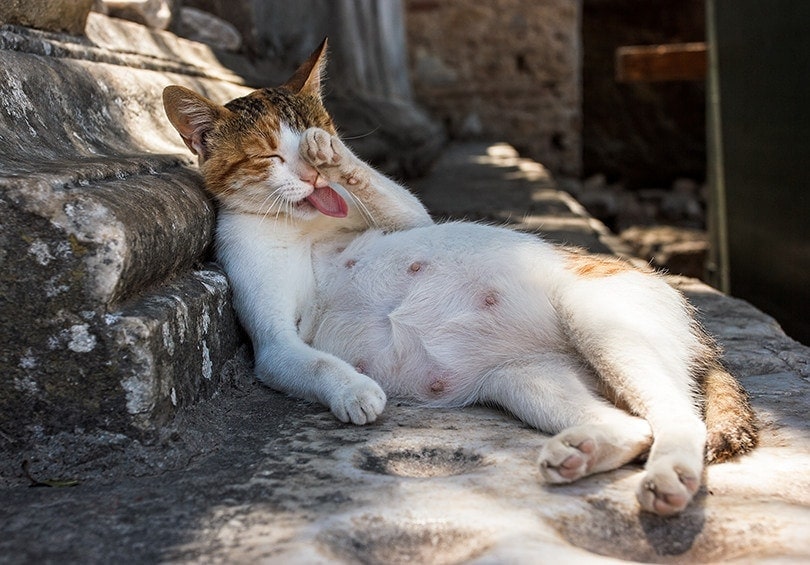
3. Stage 3
The third stage of labor immediately follows the kitten’s birth. This is when the placenta and membranes are delivered. You can expect the placenta to be delivered following each kitten but sometimes another kitten will follow right after another and delay this process. Your cat will immediately tend to the delivered kitten by licking and nurturing them but will have to refocus on the delivery of the next kitten.
When to Call the Veterinarian
You should be in regular contact with your veterinarian during your cat’s pregnancy. While most females have perfectly safe deliveries, some problems can occur, and having a licensed veterinarian on standby to assist will help ensure the health and well-being of the mother and the kittens. Below are some things to watch for during the birthing process that indicates a problem.
- 20 minutes or more of intense labor and straining without delivery of a kitten
- Kitten becomes noticeably trapped in the birth canal for more than 10 minutes
- Your female becomes lethargic or has a fever greater than 103 degrees Fahrenheit
- The number of placentas delivered doesn’t match the number of kittens that were born
- Excessive bleeding that lasts for more than 10 minutes can be a sign of an infection, uterine tear, or postpartum hemorrhage
Conclusion
There are quite a few signs that your female cat may still have more kittens left to deliver. It is important to be aware of what all the process of labor and delivery entails so that you can be best prepared to care for your cat during the process. It is also important to be aware of the warning signs of any potential birthing complications so that you can get the necessary help from a veterinarian if needed.
See also:
- What Is the Cost of an Ultrasound for a Cat?
- How Can I Tell When My Cat Is Done Giving Birth? Vet Approved Guidance
Featured Image Credit: Azovsky, Shutterstock


